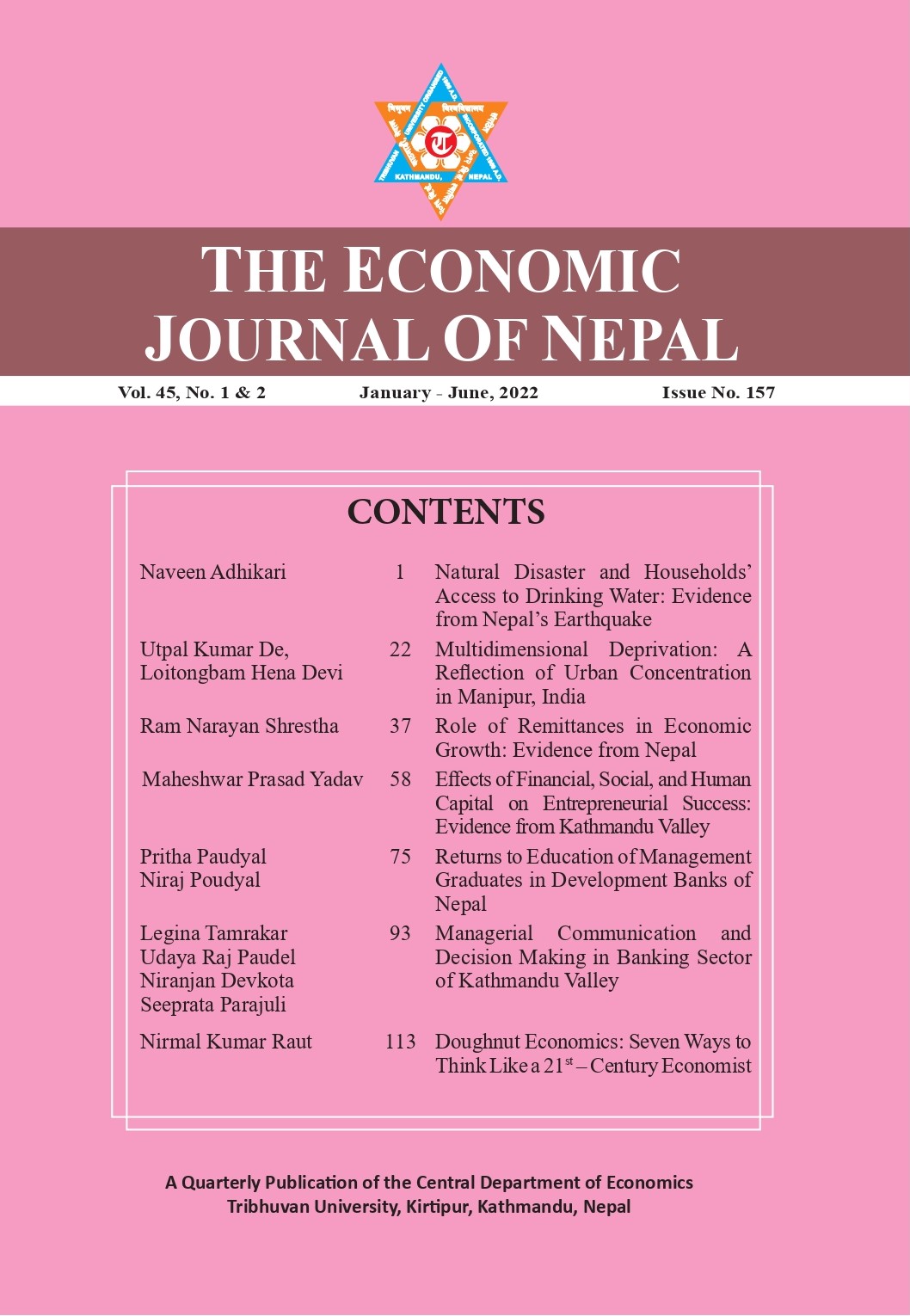Role of Remittances in Economic Growth: Evidence from Nepal
DOI:
https://doi.org/10.3126/ejon.v45i1-2.58540Keywords:
Remittance, Economic Growth, Time Series Analysis, Nepal, Co-integrationAbstract
This paper analyses the dynamic roles of remittance on the process of economic growth of Nepal using time-series annual data for 37 years from 1981-2017. The basic tools of data analysis are vector error correction model, long-run structural modeling, Granger causality test, generalized impulse response functions, persistence profile, and variance decomposition analysis. The paper shows that the remittance inflow and economic growth have bidirectional relationship in the long run, but there is no relationship in the short run. Remittance affects the dynamics of other variables like investment, financial development, and investment on human capital which indirectly affect the performance of the economy through these variables. Findings indicate that remittance could promote financial development in the short run. It also shows the possibility of negative shocks in remittance flow could have a permanent negative effect on educational attainment. It concludes that an environment for investment should be created for enhancing the role of remittance on economic growth. Policies promoting flow of remittance through formal channels and financial literacy should be effective tools for channelizing remittance for economic growth. The government should prioritize the educational sector to prevent dropout of the students from schools when the households are hit negatively due to remittance shocks.
Downloads
Downloads
Published
How to Cite
Issue
Section
License
© Cedecon-TU




